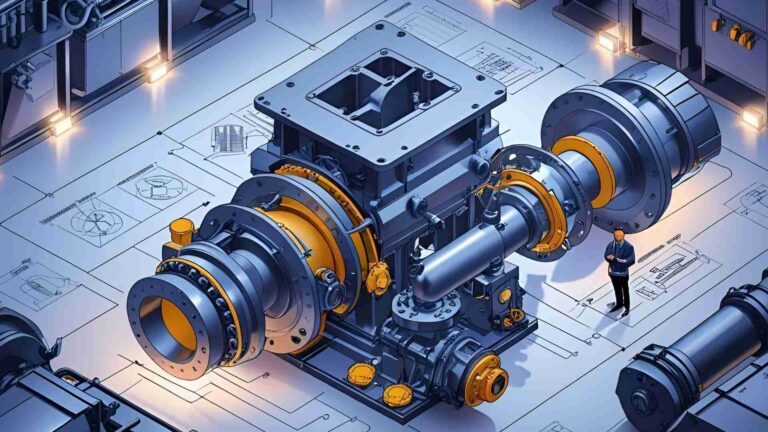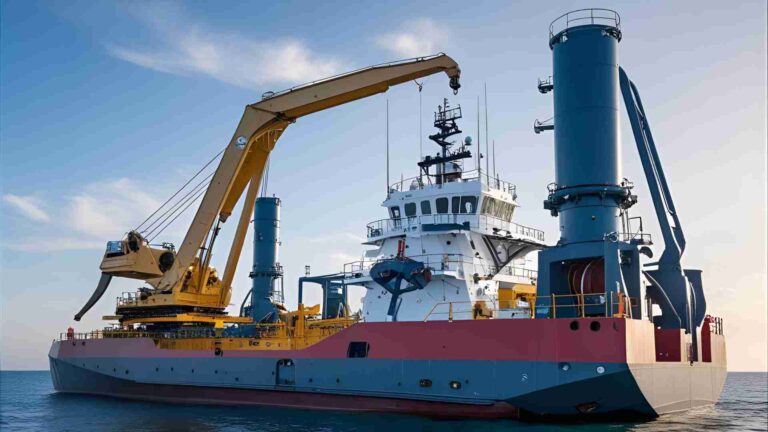Engineering Department Role in Ensuring the Vessel’s Safety and Efficient Handling
The Engineering Department stands as the technical backbone of any maritime vessel, directly responsible for propulsion, power generation, auxiliary systems, and overall operational integrity. Marine engineers, from cadets to chief engineers, manage complex machinery under high-stakes conditions where failure can lead to catastrophic safety risks, environmental damage, or massive financial losses.
This comprehensive guide explores the department’s multifaceted role in preparation, communication, responsiveness, situational awareness, team coordination, safety measures, engine monitoring, fuel management, emergency preparedness, and post-maneuvering checks. It integrates hierarchical responsibilities, regulatory compliance under SOLAS and MARPOL, preventative maintenance strategies, and real-world case studies to provide actionable insights for engine cadets, students, and seasoned professionals.
By prioritizing precision, proactive planning, and seamless interdepartmental collaboration, the Engineering Department not only safeguards lives and assets but also optimizes vessel performance in confined waters, open seas, and during critical berthing operations.
Core Preparation Protocols for Safe Vessel Handling
Preparation forms the foundational layer of the Engineering Department’s contribution to vessel safety and efficiency. Before any maneuvering—whether entering port, navigating narrow channels, or executing emergency turns—all engine room systems must achieve full operational readiness. This involves systematic verification of the main engine, steering gear, auxiliary engines, generators, pumps, and control systems. Engine cadets must conduct pre-maneuvering checks per the ship’s Planned Maintenance System (PMS), testing steering gear in both automatic and manual modes, confirming emergency steering availability, and ensuring tug assistance if required.
System readiness extends to warming up machinery to optimal temperatures and pressures. For instance, main engines typically require preheating to 50-60°C for lubrication efficiency, while auxiliary boilers must maintain steam pressure at 7-10 bar for rapid response. Failure here can cause cold-start seizures or delayed throttle response, endangering the vessel during tight maneuvers.
| Pre-Maneuvering Checklist Item | Verification Method | Critical Parameters |
|---|---|---|
| Main Engine | Visual inspection & trial run | Oil pressure: 4-6 bar; RPM buildup: <30 sec to half-ahead |
| Steering Gear | Hydraulic pump test & emergency switchover | Response time: <30 sec full port to starboard |
| Auxiliary Engines | Load test at 50% capacity | Voltage stability: ±5%; Frequency: 60 Hz |
| Fuel System | Tank sounding & purity check | Viscosity: 10-15 cSt at 50°C; Water content: <0.5% |
| Bilge Pumps | Auto-start test | Flow rate: >100 m³/h per pump |
Engineers allocate machinery among ranks: the Fourth Engineer often handles fuel bunkering and tank soundings, reporting to the Chief Engineer for procedural planning. Bunkering operations demand precise calculations—fuel density at 15°C (typically 0.85-0.99 kg/L), temperature corrections via ASTM tables, and drip sampling for sulfur content compliance (0.5% max in ECAs per MARPOL Annex VI).
Seamless Communication: The Bridge-Engine Lifeline
Communication breakdowns account for 30% of maneuvering incidents, per IMO analyses. The Engineering Department maintains direct lines via sound-powered phones, VHF channels, or integrated talk-back systems, ensuring redundancy against electronic failures. Engine orders—delivered via telegraph (e.g., “Full Ahead,” “Stop,” “Dead Slow Astern”)—must be acknowledged verbatim and repeated back for confirmation.
Feedback loops are critical: engineers report engine RPM achievement (e.g., “Main engine at 90 RPM, full ahead achieved”), exhaust temperatures (<450°C normal), and any anomalies like vibration exceeding 10 mm/s. During berthing, the Chief Engineer coordinates with the bridge on thrust availability, often limiting to 80% MCR to prevent overload.
In high-noise engine rooms (>85 dB), visual aids like synchronized telegraphs and CCTV monitors supplement verbal exchanges. Cadets train in order clarity drills, simulating rapid sequences (e.g., ahead-astern crashes for crash stops, requiring <15 seconds reversal).

Responsiveness and Telegraph Order Execution
Maneuvering demands instantaneous adaptability, with engine orders changing every 10-30 seconds in confined waters. The department keeps the main engine on “standby” mode—fuel injectors primed, cooling water circulating, and lube oil at 50°C—for immediate response. Crash maneuvers require reversing from full ahead (100 RPM) to full astern (<60 seconds on modern vessels with controllable-pitch propellers).
Contingency planning includes dual-fuel capabilities (switching to low-sulfur MDO in <1 hour) and emergency generator auto-start (<45 seconds per SOLAS). Engineers simulate blackouts via drills, restoring power via uninterruptible supplies for critical loads like navigation lights (minimum 3 hours backup).
Situational Awareness and Maneuvering Plan Integration
Engineers must internalize the bridge’s maneuvering blueprint, anticipating demands: berthing requires frequent astern bursts (20-30% MCR), while unberthing needs sustained ahead power with bow thruster synergy (500-1000 kW typical). Foresight involves calculating bollard pull equivalents and inertia effects— a 100,000 DWT tanker needs ~10 minutes to stop from 12 knots.
Team coordination assigns watchkeepers: Third Engineer oversees boilers and feed systems, ensuring condensate return >95% efficiency. Harmonious operations prevent silos; daily briefings align on fuel consumption targets (e.g., 50-60 tons/day at 15 knots for a Panamax vessel).
Uncompromising Safety Measures and Regulatory Compliance
Safety protocols under SOLAS Chapter II-1 mandate enclosed space entry permits, hot work authorizations, and LOTO (lockout-tagout) for repairs. The department conducts risk assessments for every task—e.g., welding near fuel lines requires CO2 flooding readiness.
Pollution prevention involves OWS (oily water separators) with 15 ppm alarms, incinerators for sludge (<0.5% sulfur ash), and BWMS (ballast water management systems) treating 200-500 m³/h via UV/electrochlorination. Non-compliance, as in the M/V Selene Leader case (2014 oily waste bypassing, leading to $1M+ fines and imprisonment), underscores integrity’s cost.
| Safety Equipment | Inspection Frequency | Specifications |
|---|---|---|
| Firefighting Systems | Weekly tests | CO2 bottles: 85% fill; Foam: 6% concentration |
| Life-Saving Appliances | Monthly drills | Lifeboats: Davit load 1.1x capacity; EPIRB: 406 MHz |
| Pressure Vessels (Boilers) | Annual survey | MAWP: 16 bar; Safety valves set ±3% |
| Emergency Generator | Monthly load test | Start time: <45 sec; Runtime: 3 hours min |
Vigilant Engine Monitoring and Parameter Oversight
Real-time monitoring via SCADA systems tracks 100+ parameters: cylinder exhaust (400-500°C), bearing temperatures (<80°C), and turbocharger speeds (20,000-30,000 RPM). Anomalies trigger alarms—e.g., high jacket water temperature (>90°C) prompts load reduction.
Fuel management optimizes SFOC (specific fuel oil consumption, 170-190 g/kWh ideal). Switching to LSFO near shore involves heating to 40°C for viscosity control, with flow meters accurate to ±0.5%.
Emergency Preparedness and Drill Regimen
Drills per ISM Code include engine failure (black ship recovery in <10 minutes), flooding (bilge pumps at 2x capacity), and fire in machinery spaces (boundary cooling to <100°C). Cadets participate in tabletop exercises simulating propeller entanglement, requiring azimuth thruster deployment if equipped.
Post-Maneuvering Checks and System Validation
Post-berthing, engineers inspect for stress fractures, secure loose fittings, and log parameters. This includes purging fuel lines, checking stern tube seals (oil loss <1 L/day), and updating PMS records for class society audits.
Hierarchical Responsibilities and Rank-Specific Duties
The department’s structure ensures accountability:
- Chief Engineer: Ultimate authority; enforces SOLAS, drafts standing orders (e.g., no hot work without gas-free certification), oversees budgets ($500K-$2M annual maintenance for large vessels). Salary range: $10,000-$15,000/month.
- Second Engineer: Manages daily operations, risk assessments, and crew training; PIC for engine room in Chief’s absence. Handles machinery overhauls (e.g., piston replacement costing $50,000/part).
- Third Engineer: Boilers, fuel systems, bunkering; monitors auxiliary engines (500-1000 kW each, $1M replacement).
- Fourth Engineer: Propulsion controls, HVAC (chillers at 500 RT capacity), electronics.
- Electro-Technical Officer: Electrical systems (11kV switchboards, $200K transformers); automation troubleshooting.
Ratings support: Motormen stand watches ($2,000-$4,000/month), Fitters perform welds (MIG/TIG certified), Wipers maintain cleanliness.

Preventative Maintenance and PMS Integration
PMS software (e.g., AMOS, $50,000/license) schedules 1,000+ tasks annually: oil analysis every 500 hours, valve overhauls at 10,000 hours. Prioritization matrix:
- Safety-critical (hull integrity, fire systems).
- Regulatory (emissions testing).
- Operational (propulsion efficiency).
- Cost-driven (filter replacements, $100 each vs. engine damage $1M).
Technical Vessel Management and Risk Mitigation
Technical superintendents oversee dry-docks (every 2.5-5 years, $5M-$20M cost), spare parts inventory (critical spares at 5-10% vessel value), and IoT predictive analytics (vibration sensors predicting failures 30 days ahead).
Outsourcing to firms like AFC Mercy provides scalability, but in-house control ensures customization.
Pressure Vessel Safety in Engine Systems
Boilers and air receivers (MAWP 10-20 bar) require NDT (ultrasonic thickness gauging annually), safety valves (pop test at 95% set pressure), and material certification (ASME Section VIII).
Checklist: Daily pressure logs, weekly valve tests, annual hydrotests at 1.5x MAWP.
Case Study: Lessons from Non-Compliance
The M/V Selene Leader incident highlights record falsification risks. Proper OWS operation (15 ppm discharge) and honest logging prevent APPS violations ($10,000/day fines possible).
Future Trends: Digitalization and Sustainability
IoT sensors enable 20% fuel savings via optimization algorithms. Green tech: scrubbers ($2M install, 99% SOx reduction), LNG dual-fuel ($10M retrofit, 20% CO2 cut).
Frequently Asked Questions
Standby ensures fuel injectors are primed, lube oil is at 50 °C, and cooling water circulates so the engine can respond to crash-stop or astern orders in under 15 seconds on CPP vessels.
Testing the steering gear in both automatic and manual modes, plus emergency switchover, must complete in under 30 seconds to guarantee full port-to-starboard response before entering confined waters.
Direct sound-powered phones, VHF, and talk-back systems provide redundancy; every telegraph order is repeated verbatim and acknowledged with immediate parameter feedback (RPM, exhaust temperature, vibration).
Switch from HFO to LSFO/MGO at least 1 hour before entry; heat LSFO to 40 °C for 10–15 cSt viscosity, confirm sulfur <0.1 %, and log flow-meter totals for Port State Control.
Daily OWS alarm tests (15 ppm limit), incinerator ash analysis (<0.5 % sulfur), and accurate oil record book entries; falsification risks APPS fines exceeding $1 M.
Safety-critical items (fire pumps, lifeboat davits) first, then regulatory (emissions scrubbers), followed by efficiency (fuel valve grinding) and cost-driven (filter changes) using the PMS risk matrix.
Pop-test annually at 95 % of set pressure (±3 % tolerance); vessels failing re-certification are detained until replacement under ASME Section VIII and class society rules.
Conclusion
The Engineering Department is the silent guardian of every vessel’s safety and efficiency, transforming complex machinery into reliable performance under the harshest conditions. From meticulous pre-maneuvering checks and instantaneous bridge communication to proactive fuel management and emergency readiness, marine engineers execute precision at every level.
Through rigorous PMS adherence, SOLAS compliance, and seamless team coordination, they prevent failures, protect the environment, and ensure operational continuity. Cadets mastering these disciplines evolve into chief engineers who lead with foresight and accountability.
In an era of digital monitoring, green fuels, and predictive maintenance, their role grows ever more vital. Ultimately, a vessel’s safe passage—whether threading narrow straits or weathering storms—rests on the skill, vigilance, and unity of its engine team. Excellence in engineering doesn’t just power the ship; it safeguards lives, cargo, and the maritime future.
Happy Boating!
Share Engineering Department Role in Ensuring the Vessel’s Safety and Efficient Handling with your friends and leave a comment below with your thoughts.
Read MARPOL Annex IV: Ship Aero Sewage Treatment Plant (STP) until we meet in the next article.






